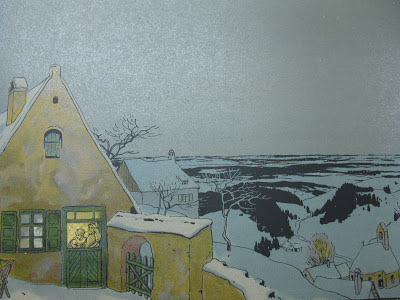Now we're in my domain! Up in Fred Waring's America, we have EVERYTHING Fred Waring. Considering how long his career was, it's no wonder there are five million and two Christmas songs put onto two million and a half albums (warning: these numbers may be off; which way is your guess), and for many Americans around during the Pennsylvanians' heyday on television and radio these songs are the staple of holiday cheer. Thankfully, due to the modern marvel of digitization and YouTube, we get to continue sharing them with you.
The most expensive song in Christmas was a dramatic moment for the Fred Waring Show. During "The Twelve Days of Christmas," they fit nearly the entire cast and crew of the show on set and created a surprise formation at the end similar to their "dancing dominoes" routine. You'll want to skip to 1:25 to get straight to the song I'm talking about. Remember: this was live television, and it was in the youth of broadcast television (most agree 1948 as its public birth year), so the routine was quite impressive for its time!
Christmas, just like any other family gathering, is not exempt from familial strife. In one of the funniest videos I have ever come across in Fred Waring's America, Fred gets caught up in a battle of the wills. And we all know that a large group of upset toddlers is more than a match for any one adult. Though the segment was originally entitled "Babes in Toyland," we in FWA have lovingly nicknamed it "Fred Waring in the Christmas Octagon." You'll see why...
Of course, there are always a wealth of beautiful, traditional Christmas songs. One of our most popular videos is the 1954 Christmas Special of The Fred Waring Show, hosted by Ronald Reagan. This three-parter on our channel is chock-full of songs, from traditional carols to popular modern ballads and devotional hymns. *Sigh* I do love the smooth, sweet tenor of Gordon Goodman crooning "The Christmas Song," and of course the sampling of scenes from Harry Simeone's "The Nutcracker Suite" is a classic. We hope you enjoy these, and the many other videos we have on the FredWaringsAmerica YouTube channel. (Pssst...We have Stuart Churchill singing Schubert's Ave Maria, one of my absolute favorite pieces of all time. Great Christmas music right there!)
 |
| We're not done yet! |
I haven't seen Sound of Music in awhile (and I don't know if it really counts as a Christmas film), but as soon as I saw "Trapp family" I knew this had to go up here. What I love is that you get the English words above the German, so you have some options for fun party games after the eggnog has been served. Try it with a whole room of people who don't speak German and watch out for those 3+ syllable words!
 |
| The unique, woodblock-like illustrations were done by Agathe Trapp |
I'm particularly smitten by this 1910 print of Weihnachtsklaenge, a German Christmas music book. It has such wonderfully illustrated pictures in full color along with German carols.
 |
| Instant love from the moment I laid my eyes on it. |
 |
| I love the richness of the colors! This was one of those times where I had to tear myself away or risk spending the afternoon doing nothing else but drooling over the illustrations. |
Finally, the Frost Queen and Santa Claus tickled me pink just because it sounds like a 1950s TV special. Really, it's an 1890 cantata written for children by William Howard Doane, who turns out was famous for his hymn-writing. Sunday school teachers must have loved his work, because an enthusiastic ad for this particular cantata appears in their circular and in my research on this I found out Doane amassed a sizable financial cushion to retire on. Part of it was his work in industry, but I have to be honest...if this were around today, I'd probably buy a whole bunch and give them out as Christmas gifts because it looks like a hoot. I can see why they were so popular back then!
Well, while our Christmas tour has ended, the joy of learning does not! We here at Special Collections wish you the merriest and happiest of holidays, and hope to see you in January 2013! Be safe, everyone, and to all a good night!
-Alex
*Fun fact: the word wassail is derived from the Anglo-Saxon toast of be in good health. Also, groups of young men would sing "We Wish You a Merry Christmas" for a musical excuse to trash prominent neighborhoods by demanding food and drink in exchange for not destroying people's homes. You know, in good cheer and all.Today's wassailers are laaaaame!









































